Middle East
What and when is Hajj? An illustrated guide, answers to 10 common questions | Religion News
An estimated 1.8 million Muslims are preparing to embark on the Hajj pilgrimage to Mecca which begins on June 4.
The Hajj is the largest annual gathering of Muslims from all over the world and a once-in-a-lifetime journey for many.
In this visual explainer, we cover 10 frequently asked questions about the Hajj, providing insights into its significance, rituals and preparations.
1. What is the Hajj?
The Hajj is the annual pilgrimage to Mecca, Saudi Arabia, and it is the fifth and final pillar of Islam, along with declaration of faith (shahada), five daily prayers, obligatory charity (zakat), and fasting during the month of Ramadan.
The word comes from the Arabic root “h-j-j”, which means “intending a journey” or “to set out for a definitive purpose”.
It is obligatory once in a lifetime for all adult Muslims who are physically and financially able to undertake the journey.

2. When is the Hajj performed?
The Hajj is performed between the 8th and 12th (or 13th) of Dhul-Hijjah, the 12th and final month of the Islamic calendar. The timing falls roughly 70 days after the end of Ramadan, though this can vary slightly depending on the lunar cycle.
In 2025, the Hajj will take place from June 4 to June 9, but many start arriving in the days and weeks ahead to prepare for the journey.
Because the Islamic calendar follows a lunar cycle, with months lasting 29 or 30 days, the Hajj shifts 10 to 12 days earlier each year in the Gregorian calendar. Notably, this year marks the last time for the next 16 years that the Hajj will fall during Mecca’s peak summer heat.

3. Why do Muslims perform the Hajj?
Muslims believe that the Hajj is a direct commandment from Allah (God), as outlined in the Muslim holy book, the Quran.
It was affirmed during Prophet Muhammad’s “farewell pilgrimage” in 632 AD, in the 10th year of the Islamic calendar.
Islamic tradition holds that the Kaaba, a stone structure draped in black silk at the centre of Mecca’s Grand Mosque where many Hajj rituals take place, was built by Prophet Abraham (Ibrahim) and his son Ishmael (Ismaeel) under God’s command. This marks the origins of the Hajj, which was instituted as a divine ritual for the first time.

The journey is a spiritual one, and it is considered to allow Muslims to seek forgiveness, purify their souls and demonstrate their submission to God. The word Hajj is mentioned 12 times across the Quran, including one chapter named after it.
Hajj also serves as a reminder of the Day of Judgement, and by performing it, Muslims follow the example of Prophet Abraham and his family, whose actions are commemorated during the pilgrimage rituals. Ultimately, it is a way to fulfil a key religious obligation and strengthen one’s faith.
4. How long does the Hajj last?
The Hajj lasts five to six days, depending on how it is performed. It begins on the 8th of Dhul-Hijjah, a day known as Tarwiyah, when many pilgrims travel to Mina, a desert valley located about 8 kilometres (5 miles) from Mecca, where they spend the night in preparation for the next day’s rituals.
It ends with Tashreeq days, where pilgrims return to Mina for the symbolic stoning of the Devil at a site called Jamarat, after which they perform final rituals to symbolise the end of the Hajj. Some may leave on the 12th if they complete their rites early, while others stay until the 13th.

5. What is the difference between the Hajj and Umrah?
While the Hajj is a compulsory pilgrimage for all able-bodied Muslims once in their life, Umrah is a recommended smaller and simpler pilgrimage that Muslims can perform any time throughout the year.
The graphic below shows some of the key differences between the Hajj and Umrah:

6. Which key rituals do Muslims perform during the Hajj?
Muslims perform many rites and rituals during the days of the Hajj, which can be explained in the following steps.

DAY 1
Ihram – Entering the state of Ihram is both a physical and spiritual condition, involving the niyah or intention to perform the Hajj, wearing specific garments (two unstitched clothes for men and modest attire for women), and adhering to prescribed conduct. This ritual must occur before entering Mecca, either in the pilgrim’s home country or at one of the designated locations on Mecca’s outskirts.
Arrival Tawaf – After entering Mecca in Ihram, many pilgrims perform an initial Tawaf by circling the Kaaba seven times in a counterclockwise direction. This symbolises unity in the worship of the One God. Pilgrims can then perform the sa’i, a ritual of walking seven times between the hills of Safa and Marwa, located within the Masjid al-Haram.
Mina – Pilgrims proceed to Mina, located about 8km (5 miles) east of the Kaaba, where they will spend the night in prayer and reflection. Mina is famously known as the “city of tents” due to the vast expanse of white tents to house the millions of pilgrims.
DAY 2
Day of Arafah – On the second day of the Hajj, pilgrims arrive early at the plains of Arafah, about 15km (9 miles) from Mina. They spend the afternoon in wuquf (standing) from midday to sunset, praying and repenting. Arafah is the most important ritual of Hajj. Muslims worldwide are encouraged to fast on this day.
Muzdalifah – After sunset, pilgrims travel to Muzdalifah, some 9km (5.5 miles) away, where they pray Maghrib and Isha prayers before collecting pebbles for the next day’s ritual. There they spend the night under the open sky.
DAY 3
On this day, Muslims from around the world celebrate the first day of Eid al-Adha, or the celebration of the sacrifice.
Rami al-Jamarah al-Kubra (stoning the largest pillar) – Pilgrims return to Mina where they throw seven pebbles at the largest of three stone pillars. This ritual represents the stoning of the devil which symbolises rejection of Satan’s temptations.
Qurbani (animal sacrifice) – Pilgrims, or agents on their behalf, offer an animal sacrifice in remembrance of Abraham’s willingness to sacrifice his son in obedience to God.
Halq or Taqsir (shaving or trimming hair) – Men shave or trim their heads and women cut a small portion of hair. This symbolises spiritual renewal.
Tawaf al-Ifadah (main Tawaf) – Pilgrims return to Mecca to perform Tawaf followed by Sa’i.
DAYS 4 and 5
Mina – Pilgrims return to Mina and perform Rami (stoning) of all three stone pillars each day.
DAY 6 (optional)
Mina – Pilgrims who remain for an extra day repeat the stoning ritual at all three pillars.
Farewell Tawaf
Before leaving Mecca, pilgrims perform a final Tawaf around the Kaaba, known as the Tawaf al-Wada or a “farewell tawaf,” signifying a spiritual farewell to the holy sanctuary.

7. What are the different types of Hajj?
There are three types of Hajj to facilitate the pilgrimage for Muslims from different locations and abilities:
Hajj al-Tamattu (the “eased” Hajj) – Hajj al-Tamattu is the most common type of Hajj, particularly for international pilgrims or those living outside Mecca. In this form of Hajj, pilgrims first perform Umrah, exit the state of Ihram, and then re-enter Ihram to perform Hajj. For those performing Hajj al-Tamattu, sacrificing an animal is obligatory, unless one is unable to afford it, in which case fasting is required instead.
Hajj al-Qiran (The “combined” Hajj) – In Hajj al-Qiran, pilgrims combine Umrah and Hajj, similar to Tamattu, but without exiting the state of Ihram. Pilgrims remain in Ihram throughout both rites. Sacrificing an animal is also required for those who can afford it.
Hajj al-Ifrad (Hajj alone) – Hajj al-Ifrad is intended for pilgrims who perform Hajj alone, without combining it with Umrah. This form is usually performed by residents of Mecca. This form of Hajj does not require the sacrifice of an animal, though it can be performed voluntarily.

8. What is not permitted during the Hajj?
The etiquette of the Hajj bans several actions that are otherwise permitted in Islam, including sexual relations (and anything leading to it, like embracing or kissing), cursing, arguing, hunting, shaving or cutting hair and nails, using perfume, arranging or conducting a marriage, wearing stitched clothes (for men), covering the head (for men), and covering the face (for women).
If a pilgrim unintentionally or unknowingly does something prohibited during the Hajj, there are usually specific actions and steps to rectify their situation. This often involves repentance, as well as making up for the mistake by offering charity or an animal sacrifice.
9. What should one pack for the Hajj?
Packing for the Hajj requires careful planning to ensure you have everything you need without overloading. The graphic below provides a practical checklist of things one should pack before embarking on the journey.

10. How do Muslims mark the end of the Hajj?
Muslims mark the end of the Hajj with Eid al-Adha, celebrated on the 10th of Dhul-Hijjah and lasting up to three days in many countries.

The day begins with a special prayer shortly after sunrise, as Muslims gather in mosques or open areas wearing their finest clothes. The rest of the day is spent sharing meals, exchanging gifts, and visiting family and friends. The greeting “Eid Mubarak”, meaning “Blessed Eid,” is commonly exchanged.
Eid al-Adha also involves the ritual of animal sacrifice, known as Qurbani. Muslims who are able to do so sacrifice a sheep, goat, cow or camel, and the meat is divided into three parts: one for the family, one for relatives and friends, and one for those in need.

Middle East
Iran’s Khamenei slams US nuclear proposal, vows to keep enriching uranium | Nuclear Energy News
Iranian supreme leader says issue of uranium enrichment remains key to Tehran’s pursuit of energy independence.
Iranian Supreme Leader Ayatollah Ali Khamenei has pledged that Tehran will not abandon its uranium enrichment, rejecting a key demand in a United States proposal aimed at resolving a long-running dispute over Iran’s nuclear programme.
The comments were delivered in a speech on Wednesday as the US and Iran continue to negotiate the details of a possible new nuclear deal. The issue of uranium enrichment has remained a sticking point in the talks, with the US reportedly demanding a complete halt or low-level enrichment in exchange for the lifting of Western sanctions against Tehran.
“The US nuclear proposal contradicts our nation’s belief in self-reliance and the principle of ‘We Can,’” Khamenei said in his speech delivered on the commemoration of the death of the Islamic Republic’s founder, Ayatollah Ruhollah Khomeini, in 1989.
Khamenei said the issue of uranium enrichment remained key to Iran’s pursuit of energy independence.
“Independence means not waiting for the green light from America and the likes of America,” he said, adding that the US proposal was “100 percent against” the ideals of the 1979 Islamic revolution.
He said Tehran would not seek Washington’s approval for its decisions.
“Some people think that rationality means bowing down to America and surrendering to the oppressive power; this is not rationality,” Khamenei said.
“Why are you interfering in whether Iran should have enrichment or not? You cannot have a say.”
On Tuesday, Iranian President Masoud Pezeshkian also said that Tehran “would not abandon” the country’s scientific and nuclear rights, while disavowing nuclear weapons.
He said that those accusing Iran “are proliferating” weapons of mass destruction and destabilising the region with deadly weapons.
On Monday, the Reuters news agency had reported that Tehran was poised to reject the latest US proposal to end a decades-old nuclear dispute, quoting an unnamed diplomat as saying the proposal was a “non-starter” that fails to soften Washington’s stance on uranium enrichment or to address Tehran’s interests.
Tehran said it wants to master nuclear technology for peaceful purposes and has long denied accusations by Western powers that it is seeking to develop nuclear weapons.
US envoy Steve Witkoff, who heads the American delegation in talks with Iran, has said President Donald Trump opposes Tehran continuing any enrichment, calling it a “red line”.
A leaked United Nations report shows that Iran has ramped up production of enriched uranium near weapons-grade by 50 percent in the last three months. It is still short, however, of the roughly 90 percent required for atomic weapons, but still significantly above the 4 percent or so needed for power production.
Iran, however, has rejected the latest report from the International Atomic Energy Agency (IAEA), saying it is “politically motivated and repeates baseless accusations”.
Ira is currently grappling with multiple crises including a plunging currency, losses among regional militia proxies in conflicts with Israel, and rising fears of an Israeli strike on its nuclear sites.
A failure to get a new nuclear deal could see tensions further spike in a Middle East already on edge over Israel’s war in Gaza.
Middle East
The water of Hajj: A simple illustrated guide to Zamzam | Religion News
The Hajj pilgrimage began on Wednesday. Some 1.8 million Muslims from across the globe are expected to gather in the Saudi holy city of Mecca for the annual gathering that will conclude on June 8.
Hajj is a once-in-a-lifetime obligation for all adult Muslims who are physically and financially able to make the journey.
Throughout the sacred pilgrimage, pilgrims drink from Zamzam, a wellspring believed to have been flowing for more than 4,000 years, nourishing them to this day.
But where does this water come from, and why does it hold such deep significance?
Where is the Zamzam well located?
Zamzam water comes from a well, located within the Grand Mosque of Mecca (Masjid al-Haram), some 21 metres (69 feet) east of the Kaaba.
The Zamzam well is beneath the Mataf area, which is the white marble-tiled space surrounding the Kaaba where pilgrims perform Tawaf.

In 1962, King Saud commissioned the expansion of the Mataf area to better accommodate the growing number of pilgrims. As part of this project, the opening of the Zamzam well was lowered and enclosed in a basement approximately 2.7 metres (9 feet) deep beneath the Mataf.
In 2003, the basement entrances were closed, and drinking fountains were relocated to the sides of the Mataf to allow for further expansion.
Today, pilgrims access Zamzam water through dispensers and fountains spread throughout the Grand Mosque.
Why is Zamzam important to Hajj and Umrah?
Zamzam water is deeply connected to the origins of Mecca and the story of Prophet Abraham (Ibrahim), his wife Hagar (Hajar), and their son Ishmael (Ismail).
According to Islamic tradition, Prophet Abraham left Hagar and baby Ishmael in the desert valley of Mecca by God’s command as a test of faith.
When their provisions ran out, Hagar ran back and forth seven times between the two small hills of Safa and Marwa searching for water.
![The domed building covering the Zamzam well in 1803 [Mahometaanen]](https://www.aljazeera.com/wp-content/uploads/2025/06/Adriaan-Reland-Verhandeling-van-de-godsdienst-der-Mahometaanen_MG_0723-1748781303.png?w=770&resize=770%2C487&quality=80)
God responded to her faith and struggle with a miracle: water began to gush from the ground near baby Ishmael’s feet – this became the Zamzam well.
This spring saved their lives and led to the settlement of Mecca, which today has a population of about 2.2 million.
![Building covering Zamzam in 1888 [Qatar National Library]](https://www.aljazeera.com/wp-content/uploads/2025/06/1888_Kaaba_and_Zamzam-1748780777.png?w=770&resize=770%2C435&quality=80)
During Hajj and Umrah, pilgrims re-enact Hagar’s search for water by walking seven times between the hills of Safa and Marwa in the ritual of Sa’i and drink Zamzam water following the tradition of the Prophet Muhammad, who praised its purity and healing qualities.
What does Zamzam mean?
According to Islamic tradition, when the Zamzam spring miraculously gushed forth near baby Ishmael’s feet, Hagar tried to contain the water, fearing it would run out.
She is said to have exclaimed “Zamzam”, which is often understood to mean “stop! stop!” or “hold! hold!” as she tried to stop the water from flowing away by gathering it around the spring.
What is the source of the Zamzam aquifer?
Zamzam water comes from a natural underground source beneath the Grand Mosque in Mecca. The well draws water from an aquifer, a layer of rock and sand that holds water, which is refilled by rainwater that seeps in from the surrounding Ibrahim Valley (Wadi Ibrahim) and nearby hills.
The Zamzam well is about 31 metres (101 feet) deep and was originally hand-dug. Water enters the well through loose sand and gravel in the top part, and also from cracks in the solid rock below.
Today, electric pumps bring the water up instead of the old rope-and-bucket method. The well itself is now closed to the public, but the water is available through fountains and dispensers around the Grand Mosque.

The Zamzam well is considered to have flowed uninterrupted for more than 4,000 years. The continuous flow of water and its central role in Hajj and Umrah have been well-documented for centuries.
According to the General Authority for the Care & Management of the Grand Mosque and the Prophet’s Mosque, extraction and consumption of Zamzam vary by season:
On regular days:
Water supply: At least 950,400 litres (251,000 US gallons) daily
Consumption: About 700,000 litres (185,000 US gallons) daily
During peak seasons (Hajj and Ramadan):
Water supply: Up to 1.6 million litres (423,000 US gallons) daily
Consumption: Can reach 2 million litres (528,000 US gallons) daily due to the surge in pilgrims
According to the Saudi visa office, Mecca is expecting to welcome 15 million Umrah pilgrims in 2025.
To manage this demand, the Zamzam well is monitored in real time using digital sensors that track water level, pH (potential of hydrogen; a measure of the acidity or alkalinity of a liquid), temperature, and conductivity. Additional monitoring wells across Wadi Ibrahim help assess how the entire aquifer responds to water use and rainfall.
The Zamzam Studies and Research Centre (ZSRC) estimates how much water can be safely extracted and advises the Grand Mosque authority on sustainable pumping levels. Each year, the Saudi Geological Survey (SGS) issues a pumping schedule, with peak demand during Ramadan and Dhul-Hijjah and the lowest in Muharram.
If water levels fall below a set threshold, pumping is paused to allow the well to recover, ensuring a stable, long-term supply.

How is Zamzam different from tap water?
Zamzam water is clear and odourless, but it has a distinct taste due to its rich mineral content. It is slightly alkaline, with a pH between 7.9 and 8.0, higher than regular drinking water.
A study by King Saud University found no biological contamination or algae in Zamzam water, which are common in other wells and can affect taste and safety.
The minerals in Zamzam water offer several health benefits:
Fluoride: Helps prevent tooth decay, especially important in hot climates.
Calcium and magnesium: Present in higher amounts. Calcium is in an ionic form, making it easier for the body to absorb.
Sodium and potassium: Support hydration, nerve function and muscle health.
Overall, the total mineral count for Zamzam is 835mg/litre compared with Riyadh’s tap water at 350mg/litre.

How is Zamzam distributed?
The Saudi government prohibits the sale of Zamzam water for commercial purposes and strictly regulates its distribution to ensure it is provided as a sacred gift to pilgrims and not exploited for profit.

Pilgrims returning from Hajj or Umrah often bring back a 5-litre bottle of Zamzam water to share with family and friends back home. Because Zamzam water is considered a special gift, airlines typically do not include it in the regular luggage allowance, so pilgrims often carry it separately or follow specific guidelines when transporting it home.
Shipping Zamzam water through Saudi airports is simple and convenient—just follow the guidelines and use the designated containers for a smooth and hassle-free journey.#Makkah_And_Madinah_Eagerly_Await_You#Ease_And_Tranquility pic.twitter.com/de4PLGlo18
— Ministry of Hajj and Umrah (@MoHU_En) March 28, 2025
Saudi authorities have established a sophisticated, multistage system to store and distribute Zamzam water, ensuring it remains clean, safe and easily accessible. Electric pumps transport Zamzam water 5km (3 miles) south to the King Abdullah Zamzam Water Project in Kudai. There, the water is purified and then bottled.
After treatment, the water is stored in two main reservoirs:
Kudai reservoir: holds 10,000 cubic metres (10 million litres)
King Abdulaziz Sabeel reservoir in Madinah: holds 16,000 cubic metres (16 million litres)

Middle East
Iraq’s Jewish community saves a long-forgotten shrine | Religion News
In a bustling district of Baghdad, workers are labouring diligently to restore the centuries-old shrine of a revered rabbi, seeking to revive the long-faded heritage of Iraq’s Jewish community.
Just a few months ago, the tomb of Rabbi Isaac Gaon was filled with rubbish. Its door was rusted, the windows broken, and the walls blackened by decades of neglect.
Now, marble tiles cover the once-small grave, and at its centre stands a large tombstone inscribed with a verse, the rabbi’s name, and the year of his death: 688. A silver menorah hangs on the wall behind it.
“It was a garbage dump, and we were not allowed to restore it,” said Khalida Elyahu, 62, the head of Iraq’s Jewish community.
Iraq’s Jewish community was once among the largest in the Middle East, but today has dwindled to just a handful of members.
Baghdad now has only one synagogue remaining, but there are no rabbis.
The restoration of the shrine is being funded by the Jewish community, at an estimated cost of $150,000.
The project will bring “a revival for our community, both within and outside Iraq”, Elyahu said.
With the support of Iraqi officials, she expressed hope to restore further neglected sites.
There is little information about Rabbi Isaac. During a visit to the tomb earlier this year, Iraq’s National Security Adviser Qasim al-Araji stated that the rabbi had been a finance official.
Rabbi Isaac was a prominent figure during the Gaonic period, also known as the era of Babylonian academies for rabbis.
The title “Gaon” is likely to refer to his role as the head of one such academy.
His name was cited in the 10th century by another rabbi, who recounted a story that is not known from any other source, according to Professor Simcha Gross of the University of Pennsylvania.
According to the account, Rabbi Isaac led 90,000 Jews to meet Ali ibn Abi Talib, the fourth Islamic caliph and a relative of the Prophet Muhammad, who is revered by Shia Muslims as the first imam, during one of his conquests in central Iraq.
“We have no other evidence for this event, and there are reasons to be sceptical,” Gross noted.
Nothing else is known about Rabbi Isaac, not even his religious views.
According to biblical tradition, Jews arrived in Iraq in 586 BC, taken as prisoners by the Babylonian king, Nebuchadnezzar II, after he destroyed Solomon’s Temple in Jerusalem.
In Iraq, they compiled the Babylonian Talmud.
Thousands of years later, under Ottoman rule, Jews comprised 40 percent of Baghdad’s population.
As in other Arab countries, the history of Iraq’s Jews shifted dramatically after the Palestinian Nakba, meaning “catastrophe” in Arabic, and the founding of Israel in 1948. Soon after, almost all of Iraq’s 135,000 Jews went into exile.
Decades of conflict and instability — Saddam Hussein’s dictatorship, the United States-led invasion in 2003, and subsequent violence — further diminished the community.
Today, 50 synagogues and Jewish sites remain in Iraq, according to Elyahu. Most are in ruins, with some repurposed as warehouses.
Middle East
Hunger and bullets: Palestinians recall Rafah aid massacre horror | Israel-Palestine conflict News
Khan Younis, Gaza – Yazan Musleh, 13, lies in a hospital bed set up in a tent on the grounds of Nasser Hospital, his t-shirt pulled up to reveal a large white bandage on his thin torso.
Beside him, his father, Ihab, sits fretfully, still shaken by the bloodied dawn he and his sons lived through on Sunday when Israeli forces opened fire on thousands of people gathered to receive aid from the Israeli-conceived, and United States-backed Gaza Humanitarian Foundation (GHF).
Ihab, 40, had taken Yazan and his 15-year-old brother, Yazid, from their shelter in al-Mawasi, Khan Younis, to the Rafah distribution point that the GHF operates.
They set out before dawn, walking for about an hour and a half to get to the al-Alam Roundabout in Rafah, near the distribution point.
Worried about the size of the gathering, hungry crowd, Ihab told his sons to wait for him on an elevation near the GHF gates.
“When I looked behind the hill, I saw several tanks not far away,” he says. “A feeling of dread came over me. What if they opened fire or something happened? I prayed for God’s protection.”
As the crowd moved closer to the gates, heavy gunfire erupted from all directions.
“I was terrified. I immediately looked towards my sons on the hill, and saw Yazan get shot and collapse,” he recalls.
Yazid, also sitting by his brother’s bedside, describes the moments of terror.
“We were standing on the hill as our father told us, and suddenly, the tanks opened fire.” He says. “My brother was hit in the stomach immediately.”
“I saw his intestines spilling out – it was horrifying. Then people helped rush him to the hospital in a donkey cart.”
Down by the gates, Ihab was struggling to reach his sons, trying to fight against the crowd while avoiding the shots still ringing out.
“Shooting was coming from every direction – from tanks, quadcopters.
“I saw people helping my son, eventually dragging him away.”
When Ihab managed to get away from the crowd, he ran as best as his malnourished body could manage, towards Nasser Hospital, in hopes that Yazan had been taken there. It felt like more than an hour, he says.
At Nasser Hospital, he learned that Yazan had been taken into surgery.
“I finally breathed. I thanked God he was still alive. I had completely lost hope,” he says.

The bullet that hit Yazan had torn through his intestines and spleen, and the doctors say he needs long and intensive treatment.
Sitting by him is his mother, Iman, who asks despairingly why anyone would shoot at people trying to get food. She and Ihab have five children, the youngest is a seven-month-old girl.
“I went to get food for my children. Hunger is killing us,” says Ihab.
“These aid distributions are known to be degrading and humiliating – but we’re desperate. I’m desperate because my children are starving, and even then, we are shot at?”
He had tried to get aid once before, he says, but both times he came away empty-handed.
“The first time, there was a deadly stampede. We barely escaped. This time, my son was wounded and again… nothing,” he says.
But he knows he cannot stop trying.
“I’ll risk it for my family. Either I come back alive or I die. I’m desperate. Hunger is killing us.”
The group distributing aid
The GHF, marketed as a neutral humanitarian mechanism, was launched in early 2025 and uses private US military contractors to “secure the distribution points”.
The GHF’s head, Jake Wood, resigned his post two days before distribution began, citing concerns that the foundation would not be impartial or act in accordance with humanitarian principles.
Five days later, on May 30, the Boston Consulting Group, which had been part of the planning and implementation of the foundation, withdrew its team and terminated its association with GHF.
International aid organisations have been unanimous in criticising the GHF and its methods.
‘We went looking for food for our hungry children’
Lying nearby in the tent ward is Mohammed al-Homs, 40, a father of five.
He had also headed out early on Sunday to try to get some food for his family, but moments after arriving at the al-Alam Roundabout roundabout, “I was shot twice – once in the leg and once in the mouth, shattering my front teeth,” he says.
“I collapsed, there were so many injured and dead around me. Everyone was screaming and running. Gunfire was coming from tanks, drones everywhere. It felt like the end of the world.”
He lay bleeding on the ground for what felt like an hour, as medical teams were not able to reach the injured.

Then, word spread that the gates had opened for distribution, and those who could move started heading towards the centre.
It was only then that people could start moving the wounded to a nearby medical point.
“This was my first time trying to get aid, and it will be my last,” Mohammed says.
“I didn’t expect to survive. We went looking for food for our hungry children and were met with drones and tanks.”
‘I never imagined I’d face death for a box of food’
Also in the tent is someone who had succeeded in getting an aid package on the first day of distribution, on May 27, and decided to try again on Sunday: 36-year-old Khaled al-Lahham.
Al-Lahham is taking care of 10 family members: his parents, one aunt, and seven siblings, all of whom are displaced in the tents of al-Mawasi.
He had managed to catch a ride with five friends that morning, driving as close as they could to the al-Alam Roundabout roundabout.

As the distribution time approached, the six friends started getting out of the car.
“Suddenly, there was loud gunfire all around and people screaming. I felt a sharp pain in my leg – a bullet had passed clean through my thigh,” says Khaled, who did not make it fully out of the car.
“I was screaming and bleeding while people around me ran and screamed. The shooting was frenzied,” he adds. “There were tanks, quadcopters – fire came from every direction.”
Injured, Khaled could not get out of the car and huddled there until one of his friends managed to return and drive him to the hospital.
“I never imagined I’d face death for a box of food,” Khaled says.
“If they don’t want to distribute the aid, why do they lie to people and kill them like this?
“This is all deliberate. Humiliate us, degrade us, then kill us – for food?”
Middle East
Syria says Israeli attack on Deraa causes ‘significant’ losses | Syria’s War News
Israeli military says it shelled targets in Syria in response to a pair of projectile launches.
Syria’s Ministry of Foreign Affairs has condemned an Israeli strike on the Syrian province of Deraa, saying that it caused “significant human and material losses”, the state news agency SANA reports.
The strike came after the Israeli military said that two projectiles had crossed from Syria towards Israel on Tuesday, and fell in open areas in the Israel-occupied Golan Heights, though the Syrian Foreign Ministry said these were “reports that have not been verified yet”.
The ministry reiterated that Syria has not and would not pose a threat to any party in the region.
It was not immediately clear who was responsible for the projectiles.
“We believe that there are many parties that may seek to destabilise the region to achieve their own interests,” the ministry added.
Israeli Defence Minister Israel Katz said he held Syrian President Ahmed al-Sharaa responsible for the projectiles.
“We consider the president of Syria directly responsible for any threat and fire towards the State of Israel, and a full response will come soon,” Katz said.
Syria and Israel have recently engaged in indirect talks to ease tensions, a significant development in relations between states that have been on opposite sides of the conflict in the Middle East for decades.
Several Arab and Palestinian media outlets circulated a claim of responsibility from a little-known group named the Muhammad Deif Brigades, an apparent reference to Hamas’s military leader who was killed in an Israeli strike in 2024.
The statement from the group could not be independently verified.
The Israeli army said it attacked southern Syria with artillery fire after the projectiles launched at Israel.
Residents said that Israeli mortars were striking the Wadi Yarmouk area, west of Deraa province, near the border with the Israeli-occupied Golan Heights.
The area has witnessed increased tensions in recent weeks, including reported Israeli military incursions into nearby villages, where residents have reportedly been barred from sowing their crops.
Israel has waged a campaign of aerial bombardment that has destroyed much of Syria’s military infrastructure. It has occupied the Syrian Golan Heights since the 1967 Arab-Israeli war and taken more territory in the aftermath of Syrian President Bashar al-Assad’s removal in December, citing lingering concerns over the past of the country’s new government.
Around the same time that Israel reported the projectiles from Syria, the Israeli military said it intercepted a missile from Yemen.
Yemen’s Iran-aligned Houthis said they targeted Israel’s Jaffa with a ballistic missile. The group has been launching attacks against Israel in what they say is in support of Palestinians during the Israeli war in Gaza.
Middle East
US to reduce military presence in Syria, keeping only one base operational | Syria’s War News
US envoy says Syria strategy ‘will not be like the last 100 years’ as troops pull out.
The United States will shut down most of its military bases in Syria, consolidating operations to a single location, as part of a policy overhaul announced by its new special envoy.
Thomas Barrack, appointed by President Donald Trump last month as the US ambassador to Turkiye and special envoy for Syria, said the shift marks a rejection of Washington’s past century of failed approaches in Syria.
In an interview with the Turkish broadcaster NTV on Monday, Barrack said the troop drawdown and base closures reflect a strategic recalibration.
“What I can assure you is that our current Syria policy will not be close to the Syria policy of the last 100 years because none of these have worked,” he said.
US forces are expected to withdraw from seven of eight bases, including those in Deir Az Zor province in eastern Syria, with remaining operations centred in Hasakah in the northeast.
Two security sources told the Reuters news agency that US military hardware and personnel have already started relocating. “All troops are being pulled from Deir Az Zor,” one source told Reuters in April.
A US Department of State official later said troop levels would be adjusted “if and when appropriate”, depending on operational demands.
Roughly 2,000 American soldiers remain in Syria, largely embedded with the Kurdish-led Syrian Democratic Forces (SDF), a key partner in the US-led campaign against ISIL (ISIS).
The SDF, dominated by the People’s Protection Units (YPG), a Kurdish militia, has been a longstanding point of contention with NATO ally Turkiye, which views it as linked to the outlawed Kurdistan Workers’ Party (PKK).
The PKK, which recently announced its disbandment, fought a decades-long armed rebellion against the Turkish state.
Barrack called the SDF “a very important factor” for the US Congress, stressing that integrating the group into Syria’s national army is now a priority. “Everyone needs to be reasonable in their expectations,” he said.
Since the ouster of Syrian President Bashar al-Assad in December, international engagement with Damascus has resumed under new President Ahmed al-Sharaa. Barrack recently raised the US flag over the ambassador’s residence in Damascus for the first time since 2012.
Turkish President Recep Tayyip Erdogan criticised the SDF last week, accusing it of “stalling tactics” despite its agreement to join the Syrian armed forces.
-

 Economy3 days ago
Economy3 days agoHitachi Energy to invest $70M in Türkiye to expand transformer ops
-
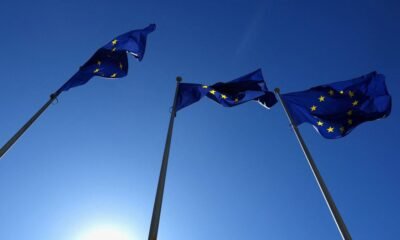
 Economy3 days ago
Economy3 days ago9 countries call for EU talks on ending trade with Israeli settlements
-

 Economy3 days ago
Economy3 days agoTemu reportedly sets up Türkiye office with one-day delivery promise
-
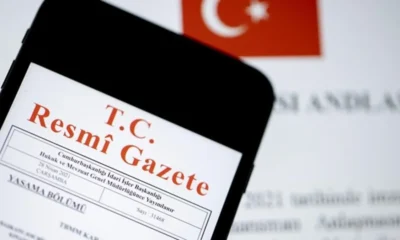
 Daily Agenda3 days ago
Daily Agenda3 days agoThe Ministry of Justice concerns the staff! Amendment was made in the Regulation on Promotion and Title Change in Task
-
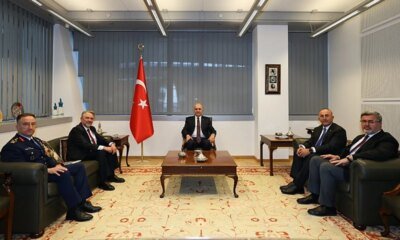
 Daily Agenda3 days ago
Daily Agenda3 days agoVisit to Türkiye’s NATO Permanent Representation from the Parliament Speaker Kurtulmuş
-
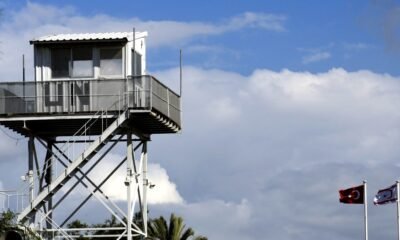
 Politics3 days ago
Politics3 days agoTurkish Cypriots set sights on full membership in Turkic body OTS
-
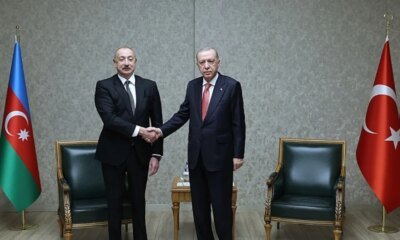
 Daily Agenda3 days ago
Daily Agenda3 days agoAzerbaijani President Aliyev: This is the manifestation of Türkiye
-
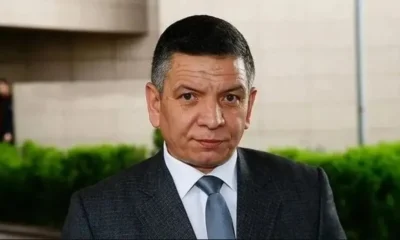
 Daily Agenda3 days ago
Daily Agenda3 days agoCoşkun Başbuğ spoke to Sabah: We need to read it as an exit made on behalf of the global gang.


